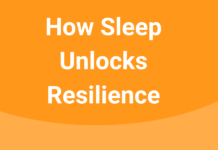
A storeroom with piles. An office closet stuffed with stuff. It was time to clear out.
The adventures started with gathering and testing my old photo studio lights so my daughter-in-law could have a better way to take pictures of products for her cool Etsy shop. I’ve obtained some new equipment that works great for me now, so these others can be shared to help her, too.
I discovered, in the simple process of trying to pull out those lights, that I had a lot of other stuff blocking those cases. Stuff I had not touched in years, yet we’d moved it across state lines multiple times. This project prompted clearing space in the storeroom, and in the process finding things that really belonged in the office closet. My wife, who needed more space in the storeroom, helped pack boxes of books and course materials to donate to the library and charity store (and for some things, the dump.) Her help made the project move quickly. In two hours, we cleared space to meet our needs better, and were able to give things away that could benefit others. And there’s much more stuff that needs to go.
The problem with having too much stuff is the energy it requires to manage that stuff! There are more shelves and drawers to look through to find what I’m seeking. This slows me down, keeping me from writing and creating. Too often I still can’t find the item that came to mind, and my train of thought derails.
What clutter gets in the way of your clear creating, service, thinking, and contribution?
Sometimes clutter is literal, like the old files and books I’ve mentioned. However, there is also figurative clutter that disturbs our efforts equally.
Figurative clutter are things like:
- Rusty knowledge or skills to apply to the work you are doing today.
- Ignorance of new tools that may help you be even more productive.
- Antiquated systems that are no longer relevant, but that have been “how we have always done it.”
- Dated processes for staying in touch with customers (both external and internal)
- Assumptions about others’ skills or agendas that keep them pegged and stuck in one role because no one sees what he or she could offer to a new position or department
In my work with leaders at all levels of organizations, I see this all the time.
If we are not evolving, we are eroding. Take the time regularly to clear the clutter–both literal and figurative–so that you can see more clearly and reap the benefits!
For more encouragement for leaders, sign up for my blog posts at Drivingresultsthroughculture.com.
Photo © Marek. All Rights Reserved





